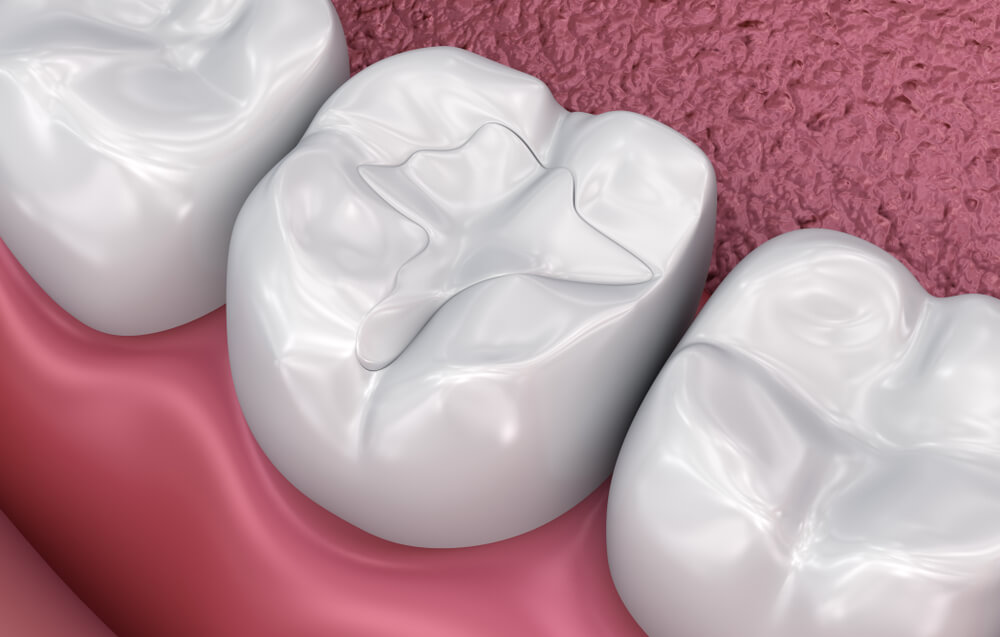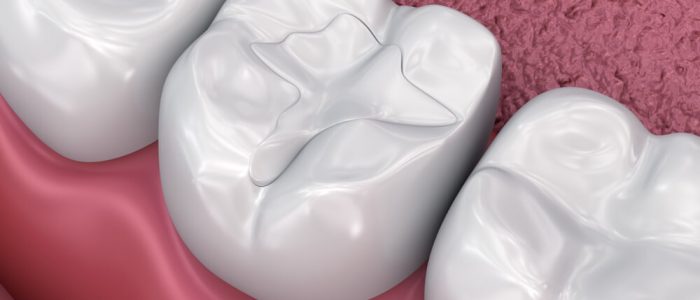Type of Dental Fillings Explained

Fillings are used to protect the teeth from the worsening effects of dental cavities.
Northside Dental Clinic in Springfield, Missouri, explains the various types of dental fillings one can choose from.
What are the different types of dental fillings?
There are two primary types: composite and amalgam.
However, there are plenty of variations that fall under these two categories:
- Silver Amalgam (contains elemental mercury and powdered alloy)
- Gold(“gold inlays” or “onlays,” alloyed gold, copper, and various metals)
- Porcelain or Ceramic (matches teeth, more brittle, and used for larger cavities)
- Glass Ionomer (made from a glass and acrylic mixture)
- Plastic (sometimes a mix of plastic and resin)
- Composite Resin (“tooth-colored,” made of glass or quartz within resin)
How long do fillings last?
No filling lasts forever, regardless of the material used.
Some fillings last longer than others due to how strong the material and bonding are:
- Gold: 10 to 30 years
- Silver: 10 to 15 years
- Plastic Composite: 10 to 12 years
- Porcelain or Ceramic: 10 years
- White Composite: 5 to 7 years
- Glass Ionomer: 30 to 42 months or 5 years
Gold Fillings
Yes, while these amalgam fillings contain gold, it’s not pure gold. It’s a mixture of multiple metals, including silver, zinc palladium, platinum, and copper.
Gold fillings are the longest-lasting, corrosion-resistant, and ductile filling type.
Silver Fillings
Silver fillings are made with the same type of alloy mixture but use silver as a base instead of gold. It’s a cheaper option and serves as the second-longest-lasting filling there is.
Plastic Fillings
Made of 100% plastic, though sometimes a resin mixture gets added. They are often used for patients who are allergic to the material found in other fillings.
Ceramic or Porcelain Fillings
Made from a tooth-colored material that contains resin reinforced with ceramic, silica, or glass quartz. The filling bonds to the tooth, requiring a dry area. A rubber dam is used to keep saliva off the tooth while the filling is bonded in multiple steps.
Composite Resin Fillings
Tooth-colored fillings, otherwise known as “white” fillings, blend in perfectly with your normal teeth. The composite material is resistant to discoloration and staining but not to the same degree as porcelain.
Glass Ionomer Fillings
These fillings contain some glass components that are perfect as temporary fillings for children. They release small amounts of fluoride to help strengthen teeth.
What causes fillings to go bad and need replacement?
They wear down with wear and tear or teeth grinding, otherwise known as “bruxism.”
Why are my teeth sensitive after a filling?
It’s normal to have tooth sensitivity after a filling, be it touch, air, sugary foods, or temperature.
If it lasts longer than two weeks, contact your dental provider for help. You might need a desensitizing agent or a root canal procedure.
What type of mercury is in dental fillings?
Dental amalgam fillings – “silver fillings” contain a mixture of mercury, silver, copper, tin, and zinc.
According to the American Dental Association (ADA) and the FDA, the mercury in amalgam fillings is safe but can pose a potential hazard to certain individuals.
High-risk persons include:
- Pregnant women and their developing fetuses
- Women who are planning on conceiving
- Those with Alzheimer’s disease and other pre-existing neurological diseases
- People with poor kidney function
- People who are allergic to mercury, copper, tin, or zinc.
- Nursing women with newborns
What are indirect fillings?
If the tooth has lost a lot of its surrounding structure but isn’t quite damaged enough to require a crown, indirect filings are used.
Dentists use indirect fillings when the cavity is too large for an amalgam filling to work.
How are indirect fillings applied to one’s teeth?
The process takes days and requires two visits to the dentist’s office.
First Day: the old, decayed filling is removed, the correct tooth shape is determined, and the impression is sent to a dental lab to be created.
Second Day: on the following visit, the temporary filling is removed, and the dentist checks to see if the indirect restoration is a good fit. If so, it’s set in place.
Two types of indirect fillings: “partial crowns”
- Inlays: pre-molded to fit the groove of your tooth.
- Onlays: porcelain restorations cemented into the gap of a tooth.
Benefit of indirect fillings:
They’re more durable and last longer than normal filings (nearly 30 years).
“Direct” inlays and direct onlays are made in the mouth and set in a single visit. This is only an option if there’s enough tooth structure remaining around the cavity.
Downside of indirect fillings:
They require more work and are therefore more expensive.
What are temporary fillings?
Fillings to be worn within a month. If worn past their expiration, contact a dentist to remove and replace it with a permanent filling or risk infection.
When should I get a temporary filling? — after a root canal, to alleviate a toothache, if you’re getting permanent fillings that require more than one dental visit, or to settle a tooth nerve.
Which type of dental filling is better?
The best type of dental fillings are composite or ceramic fillings, namely due to their natural aesthetic appeal and material strength.
The Clear Winner? Composite Fillings:
- They’re less likely to come loose or fall out because of how well-bonded they are to the tooth’s enamel.
- Customized to match the exact color of one’s natural teeth.
- The material doesn’t get affected by temperature change.
- The bond makes a weak tooth stronger, able to resist future damage.
- Unlike aluminum, silver, or gold fillings, this doesn’t require extensive drilling, which makes for a faster, simpler process during your dental appointment.
Our office exclusively uses composite resin fillings due to their aesthetic appeal, resistance to fracturing, and popularity among many dental patients.
Schedule Your Dental Filling in Springfield, Missouri, with Northside Dental
Our friendly, experienced staff will provide you with a comfortable new filling to start positively impacting your oral health needs. Schedule an appointment by calling: (417) 862-2468.

